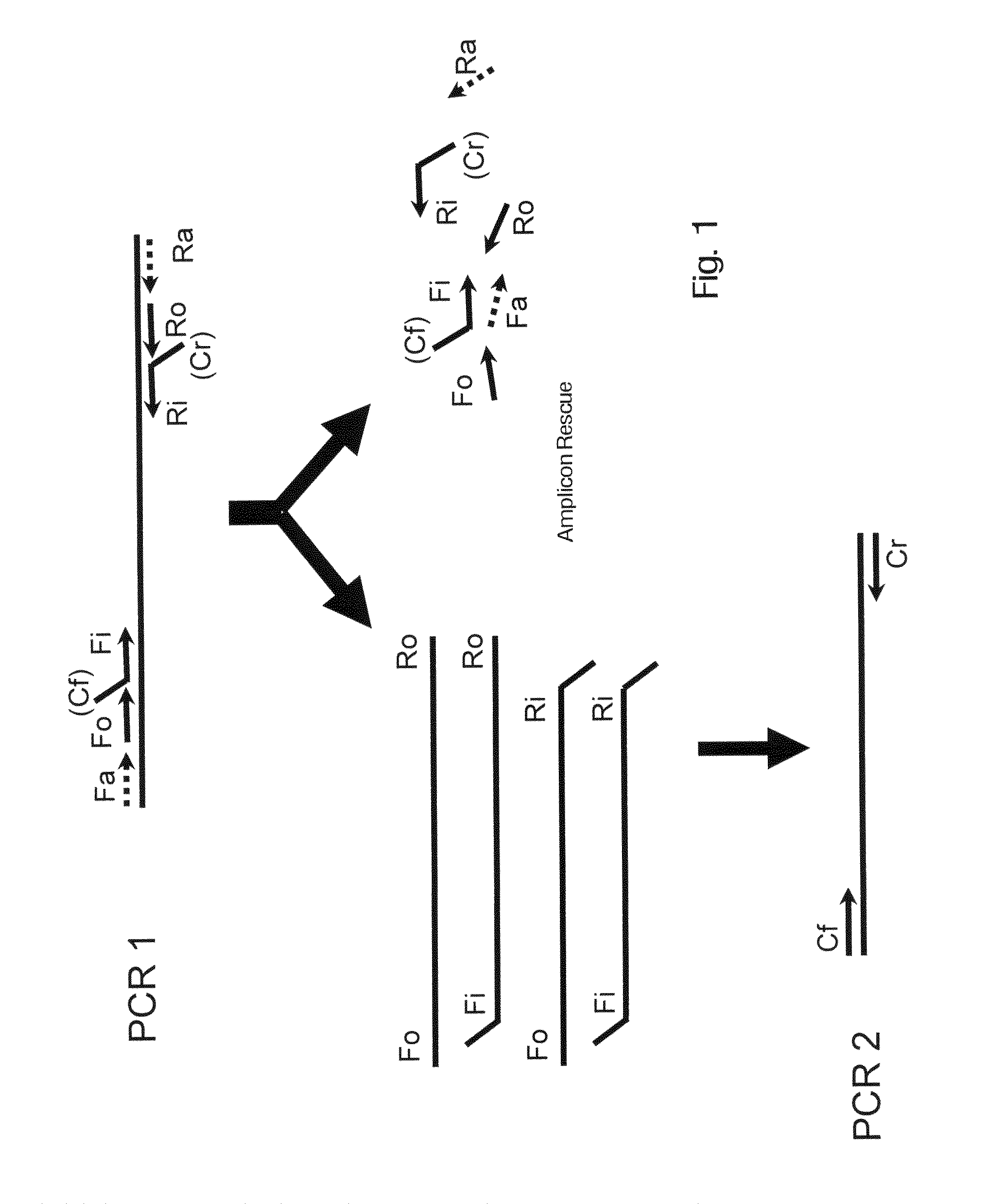Amplicon rescue multiplex polymerase chain reaction for amplification of multiple targets
a polymerase chain reaction and multiple target technology, applied in the field of amplifying nucleic acids, can solve the problems of increasing the number of targets, taking days, and difficult to amplify multiple sequences from a single sampl
- Summary
- Abstract
- Description
- Claims
- Application Information
AI Technical Summary
Benefits of technology
Problems solved by technology
Method used
Image
Examples
example 1
[0029]An arm-PCR reaction was designed to amplify and detect pathogens responsible for food-borne diseases. The target gene used for each pathogen is listed in Table 1 below.
[0030]
TABLE 1Target OrganismTarget GeneEscherichia coli (E. coli)rfbEE. colieacSalmonellainvACampylobacter jejuni (1) and coli (2)ceuEShigellaipaHYersinia enterocoliticaystVibrio choleraeOMPWE. coli (ETEC) heat labile toxinLTE. coli (STEC) shiga toxinStxVibrio cholerae-cholera toxinCtxE. coli (ETEC) heat stable toxinSTVibrio parahaemolyticustlh
[0031]Primers generated for each target are listed in Table 2. SupF and SupR indicate common primer sequences. Common primer sequences forming the tag for target-specific primers are shown in bold letters. Fo, Fi, Ri and Ro indicate the nested primers for each amplification target, while the D oligo indicates the detection probe that hybridizes to a specific sequence within the amplicon. The probe is covalently linked to a color coded bead for detection with the Luminex xM...
PUM
| Property | Measurement | Unit |
|---|---|---|
| concentration | aaaaa | aaaaa |
| concentration | aaaaa | aaaaa |
| concentration | aaaaa | aaaaa |
Abstract
Description
Claims
Application Information
 Login to View More
Login to View More - R&D
- Intellectual Property
- Life Sciences
- Materials
- Tech Scout
- Unparalleled Data Quality
- Higher Quality Content
- 60% Fewer Hallucinations
Browse by: Latest US Patents, China's latest patents, Technical Efficacy Thesaurus, Application Domain, Technology Topic, Popular Technical Reports.
© 2025 PatSnap. All rights reserved.Legal|Privacy policy|Modern Slavery Act Transparency Statement|Sitemap|About US| Contact US: help@patsnap.com

